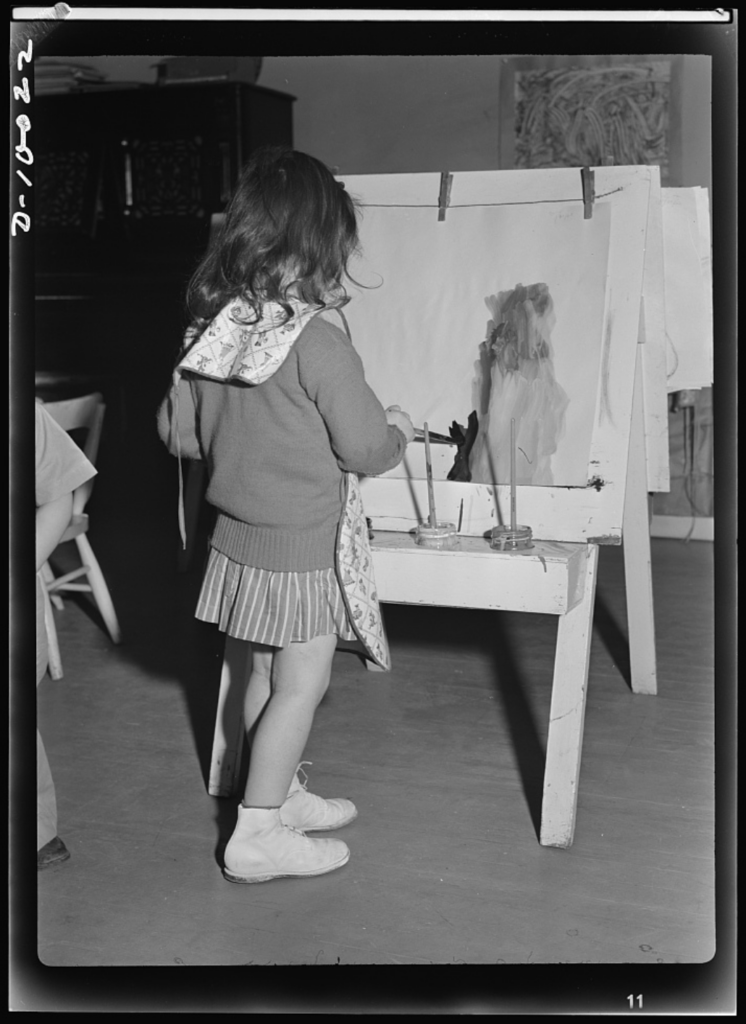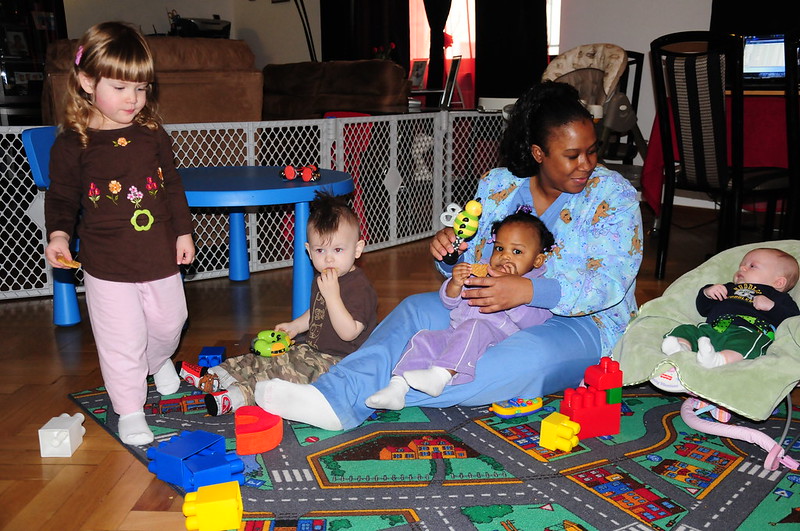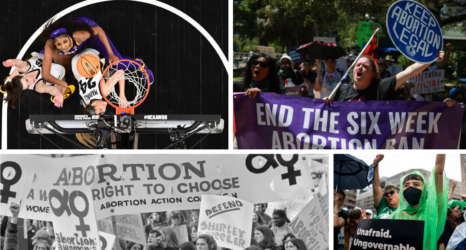Building an affordable child care system is a path out of poverty for American families, especially for women. It can also protect middle-income women and their families from falling into poverty. Now is the time to invest in child care for the economic security of women.
Well before the pandemic, America’s women and families were clear on the nation’s shortage of affordable and accessible child care options. The 2020 she-cession laid bare for everyone just how broken the child care system is.
Fixing the broken child care system is about getting our country back on track. But more specifically it’s about providing women the critical support we need to participate in the labor force, while also giving us the space to care for our own social-emotional health.
This isn’t a moment for despair, though. America has solved this problem before, and we can do it again.
World War II-Era Working Women Needed Child Care, Too—and They Got It
Our own history is proof that an investment in comprehensive child care is both necessary and achievable. When the first wave of women joined the work force during World War II, the need for child care was a reality as a national priority, not a policy or line item to be debated. Working moms had become the backbone of the economy. Comprehensive and affordable child care solutions, such as emergency nursery schools popped up across the country to meet their needs.

The circumstances at the time were unique, but the social and economic benefits of comprehensive child care and pre-K programs, both for parents and their children, have been well-documented since. Yet, over the past 75 years, America has failed to replicate the success of the child care programs established during World War II.
Reimagining the Future of Work and Child Care
We know what success looks like. YWCA USA—which offers child care to 200,000 kids annually—and the University of Texas’s LBJ School of Public Affairs have developed a blueprint for federal policymakers on how to re-imagine the future of work and create an affordable, accessible and equitable child care system that works for all of us. (Read it: America’s Recovery From The 2020 “Shecession”: Building a Female Future of Child care and Building a Female Future of Child care and Work.)
Building an affordable child care system is a path out of poverty for American families, especially for women. It can also protect middle-income women and their families from falling into poverty.
Federal lawmakers can start now by increasing funding for Child Care and Development Block Grant, Head Start, and Early Head Start programs to make child care assistance available to all eligible low- and moderate-income families, with more financial support provided to families with the most need.
There is a huge gap in the supply and demand for these programs: In 2017, the Head Start program served a record low of 848,000 children, only a third of eligible 3- to 5-year-olds, and the Early Head Start program had over 150,000 participants—just 7 percent of those eligible. Lawmakers should also cap the cost of child care to 7 percent of a household’s income and expand the Child and Dependent Care Tax Credit so that it is refundable.
Meeting Working Mothers and Families Where They Are
An accessible child care system is one that meets working mothers and families where they are. Federal lawmakers can meet the greatest need by ensuring that providers can offer non-traditional hours and in a variety of settings. We should increase the number of licensed child care providers, specifically targeting child care deserts and communities in rural areas. Families should be able to apply for child care assistance online or in person.
Lastly, we should be collecting data and conducting research on our child care system so we can continue optimizing it for all American families.
The people taking care of our children also need to be making a living wage, so they too are able to provide for their families. Over one-third of child care workers make below 200 percent of the poverty line, which is equivalent to supporting a family of four on $52,400 a year.

Child care employees should have job-protected safe leave, paid sick leave, and paid family leave, so they can have the freedom to tend to their own health conditions without risking their jobs, economic security or the health of the children in their care. Providers ought to commit to retaining and attracting a diverse workforce, and ensure that early childhood professionals can access high-quality professional development and training.
We know that innovative child care models already exist in America. Washington, D.C., and San Antonio, Texas, provide two of the most robust pre-K models in the nation. Since 2009, the nation’s capital has offered two years of universal preschool for children aged three–four. By 2016, women’s employment rate in D.C. climbed from 65 percent in 2008 to 76.4 percent. D.C. now has the highest maternal labor force participation rate among the 50 largest cities in the country.
Likewise, under former mayor Julian Castro, San Antonio developed a program that provides grants to local schools’ existing pre-K programs in addition to four Pre-K 4 SA centers that serve over 2,000 predominantly low-income four-year-olds. Educators are provided professional development, quality pay and support (such as paid planning time and access to specialists). The program spends nearly three times the amount as the state of Texas pays per child and has expanded the access to high-quality child care for half of the households that qualify for assistance.
While the San Antonio program is not universal, it offers a quality base of instruction that serves nearly 10 times the population it would without the pre-K program.
And yet here we are. In 2020, a failure to build a modern child care system fails everyone—parents, kids, child care providers and workers, and our economy. But unlike so many issues in our country, this is one that Americans agree on. A recent poll from the First Five Years Fund shows that 8 out of 10 voters support funding child care and early education programs, and more than a quarter say that early childhood education is a key determinant in supporting elected officials.
In the midst of a pandemic and the need to right so much of what has left our economy and work force vulnerable, we must look to our country’s history of successful child care programs to reimagine the American system of child care. By starting there, we set every woman on a path to economic security and opportunity in the years ahead.
You may also like:





